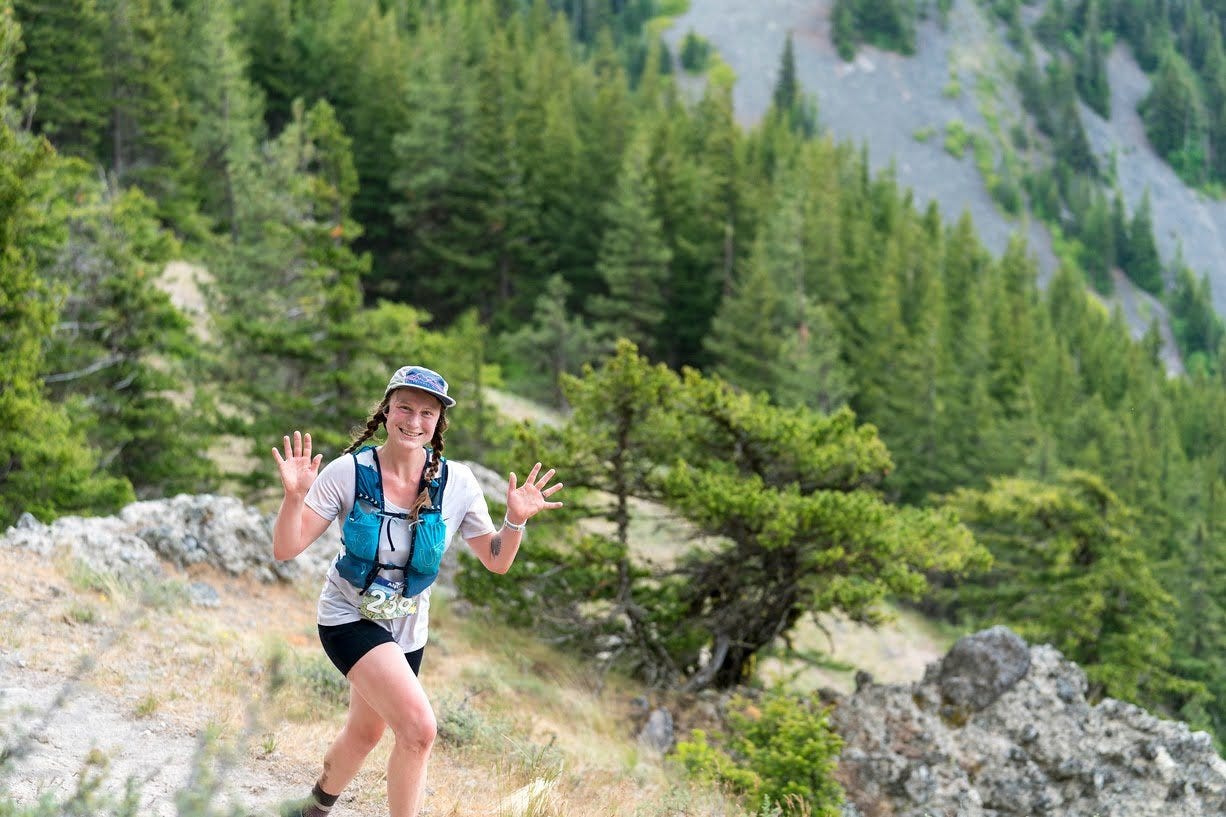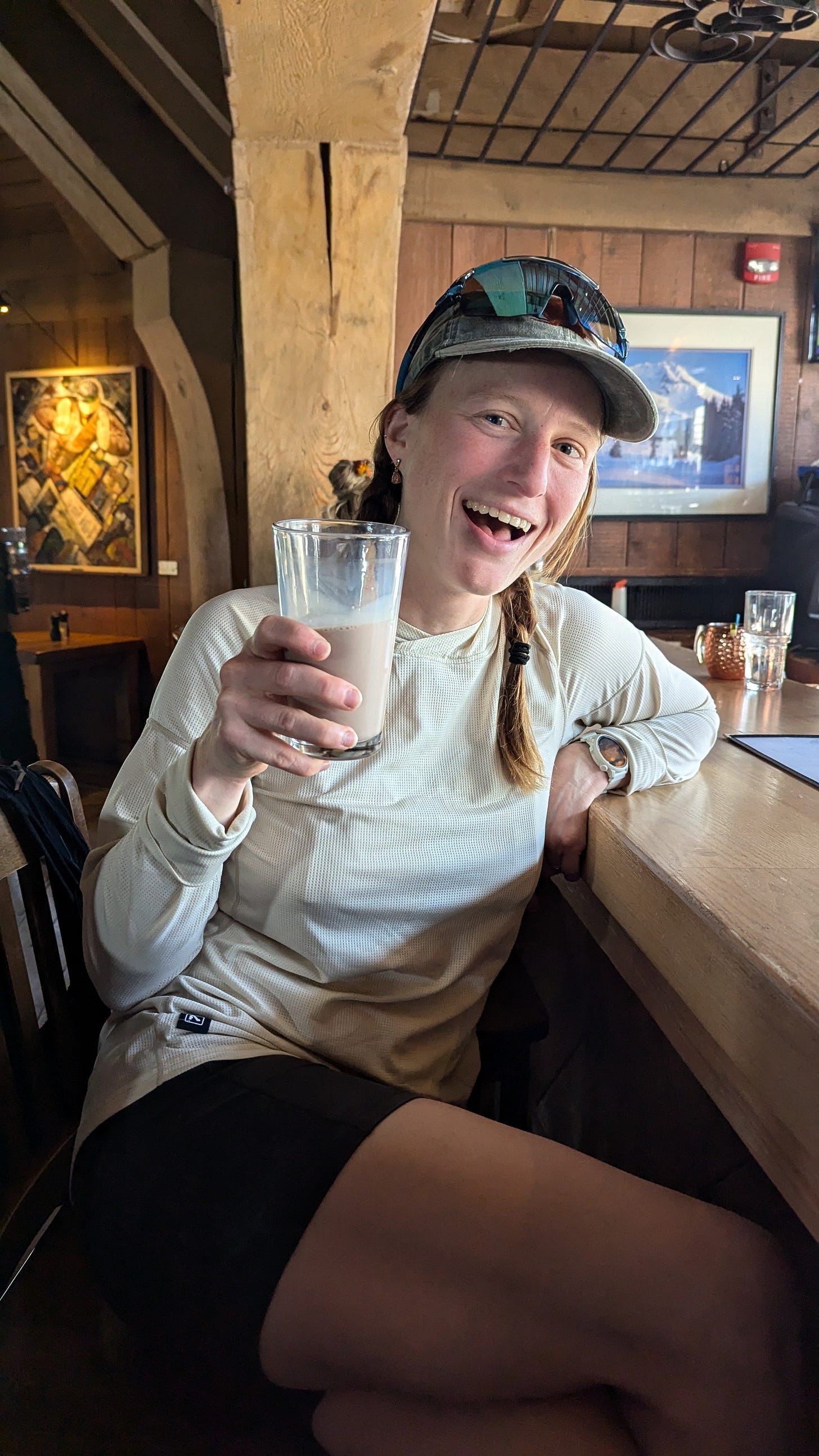3 Actions That Pushed Me From Injured Runner To Ultramarathoner
But they also helped me hone my creative voice and work. Maybe yours, too?!
Lately, I’ve been talking with women who feel like they’re stuck in the middle of a metaphorical ultramarathon: a long, uncertain stretch of effort, with high highs and low lows, without a visible finish line.
Whether it's in creative work, building a community, or just staying afloat in this stressful AF world, the terrain can feel endless. 🥲
When I work with these women, it’s like I become their “crew” in their mental race, giving them the fuel, shoe swaps, and pep talks to pivot strategically and keep going.
If you’re in a season like this and want support navigating the route you’re on, I have a few 1:1 consulting opportunities opening up! More on that at the end. But first…
Fatigue. Stress fractures. Hunger. Lack of motivation.
I’ve been running consistently for over half my life (my longest relationship!), and I’ve experienced it all.
It’s no wonder that many people associate running with pain, boredom, or even punishment! (Gym class sprints if you missed the ball, anyone?)
Funny enough, it wasn’t until I started running ultramarathons that I found myself in my happiest, healthiest running state.
At 28, I ran my first ultra (a 50k on Mt. Hood in Oregon), and there was no looking back. I knew that endurance challenges would be a pillar in my lifestyle from then on.
With that comes the public perception of “runner girl.” 🏃♀️ I can’t complain — it’s fun to chat about the sport with runners and non-runners and wannabe runners alike. One thing the latter asks often? “How is running that much possible? My body just can’t!”
Giiiirl, it probably can, if you listen to it.
Here are the key shifts I made in my running practices to become an ultrarunner who enjoys the entire training process.
1. Focusing more on effort, and less on pace, with the 80/20 method. ⌚
Running often feels hard to people because they’re making it harder than it has to be to get the benefits.
Do a search online and you’ll find a few schools of thought around training for races.
Some people figure if you want to run faster, then you should run less distance and focus on speed instead. Some prescribe run-walk minute ratios. Some plans merely spit out distances of training runs leading up to a race, with no pace or effort metric attached.
After dabbling in a few different methods, I found myself in the same spot: uninspired at best, and injured at worst.
So when I came across the 80/20 method of endurance training, I was intrigued, but didn’t have the highest expectations.
80/20 training in basic terms is spending 80% of your running workouts at an easy effort, and only 20% at moderate to high efforts.
In other words, 80% of your minutes running feel like a pace you could hold all day.
It seems hard to believe at first: How could spending most of your training at a conversational effort lead to crossing finish lines of difficult races?
Turns out, lots of research shows that 80/20 training is ideal for many endurance athletes.
In my non-medical professional learnings: When you dedicate 80% of your training to lower intensity workouts, your body has enough time to build its aerobic capacity AND achieve full recovery. The remaining 20% is reserved for moderate to high intensity workouts, which is just enough to push yourself to make gains without over-stressing the tissues.
This changed everything for me.
Before 80/20, I’d never followed an entire running plan without dread, injury, or burnout. I’d run too much, push too hard, or miss the intention of a training run.
Now, every single run on my calendar has a strategic purpose, and I can literally and figuratively breathe easy knowing that most of my time will be at a relaxed effort.
It’s a lot easier to get out the door when you don’t have to worry about pushing yourself to the max and instead look forward to an easy, joyful period of movement.
2. Strengthening my weaker muscles and prioritizing strength training. 💪
Without proper strength training education, I played a guessing game for years both at the gym and at home.
I followed arbitrary YouTube exercises, usually skipped heavier weights, and ignored plenty of muscles that would’ve helped me cross finish lines strong.
When I moved to my home in Washington State, nearly all my runs became super hilly.
My legs felt weak trying to tackle this new terrain, and I continued to struggle with IT Band Syndrome and other ailments.
My sports chiropractor noticed that I had very weak hips and glutes, and immediately assigned me a program of exercises to start strengthening them.
After a few months of adding these at-home exercises into my routines, I started to notice that hiking or running on steeper hills felt way more manageable.
I could finally feel my glutes firing on the uphills, and my hips stopped tiring out partway through runs.
For years now, I’ve prioritized strength training sessions 2-3 times per week, focusing on exercises that specifically help running form and muscle activation (for example, single leg movements, which also help build balance).
All of this can be done at home, without a gym membership. I have a modest pile of used dumbbells and they’ve gotten every job done.
The wildest part? My IT Band Syndrome finally went away, after years of pain (and thousands of dollars and many hours on physical therapy treatment and KT Tape that didn’t work).
In fact, I haven’t had a nagging running or overuse injury since I realized that strength training is a part of run training.
3. Making sure I eat enough food and calories, especially carbs. 🥯
More than anything, my wish for female athletes is that we’d all reject the toxic messaging the media gives us around our bodies.
Women have been conditioned to stay “small.” They say we shouldn’t have big muscles, but be “toned.” That we should minimize carbs and track macros. That skipping periods is a sign of fitness.
I’ll never stop screaming this from the mountaintops: We need adequate nourishment to live our happiest, healthiest, most adventurous lives.
My college years were spent being paranoid about my body and trying to make it perfect. I experienced orthorexic tendencies which pulled me away from all the fun parts of life. (Orthorexia is a type of disordered eating characterized by an obsession with health that ironically leads to malnutrition due to avoidance of certain foods.)
After under-nourishing my active body for too long, I found myself exhausted, missing my menstrual cycle (which is a vital sign), and with a terrible stress fracture: classic signs of Relative Energy Deficiency in Sports (RED-S, formerly known as the Female Athlete Triad).
It took years of un-conditioning to reframe my mindset around food. Trail running was a big help with that.
When I started training for ultras, I realized how much my body needed more calories, more carbs, even more convenience foods. My body demanded nourishment in order to produce miles and miles of movement, and, finally, I let my body lead the way.
Now, I shudder to think of the relationship I had with food a decade ago and the bland, repetitive behaviors around it that got me nowhere. These days, I eat a lot of food, and my body requires a lot of carbs — certainly more than a tabloid magazine would say.
This is a busy season of life for me, so I’m leaning into convenience foods. Shelf-stable chocolate milk, frozen pizza, and packaged trail snack bars are always in my cupboard, among the fresh veggies and grains I love to batch cook with tasty spices.
Compared to pre-ultra life, I feel healthier in my body, faster on the trails, and so much joy around sharing food with other athletes.
Rejecting societal conditioning around what a woman “should” act like or look like made me the strongest version of myself yet… and it’s just beginning.
My 20 year old self would be in awe of the resilience I honed over the following decade. 💯
By embracing easy running, strength training, and smart fueling, I went from perfectionistic to joyfully realistic, from confused to intentional, and from starving to strong AF. I became an ultramarathoner. WOOT!
And in the past few years, I’ve been happily surprised to see how many of these lessons carry over to creativity, work, and community:
80% of what you create can be at an easy, joyful, sustainable pace. 😀 You have energy for the 20% of sprinting when you have plenty of room to creatively recover!
You can build the muscles that will amplify your work. 💖 Most of us aren’t born as natural marketers, salespeople, promoters, boundary-enforcers, etc. But you can exercise those skills to get stronger at them.
Fueling creatively is non-negotiable. 🌈 In my framework, rest isn’t earned, it’s built in. Purposefully allotting time to refuel helps you go forward stronger when it’s time to move.
The same principles that helps me run ultras also helped me do all this cool shit.
My mission is to help girls and women reimagine what’s possible for them in a world that often excludes and underestimates them.
Whether that’s signing up for your first 50k, launching a podcast, or starting a community event, I hope you can learn from my own experiences so you can focus on kicking butt in your adventures, without the bullshit that the magazines (or predatory Instagram “coaches”) spread.
➡️ If you’re feeling like you’re in the middle of your own unfinished race right now…
Let me be a part of your “crew”!
I offer 1:1 creative consulting and story strategy for women navigating the messy middle of building a platform that feels true to their voice.
And I’m soooo stoked to say that with the spaciousness that July brought, I now have more space to partner with these women!
💡 Idea Incubator - For folks who can’t stop thinking about their big idea, like, all the freaking time… but still haven’t brought it to life. (In 8 weeks, we’ll get your platform out in the world, fun and functional!)
🤝 Content Sidekick - For those saying: “I made a thing and launched it... but I feel guilty that I’m not promoting it more!” And “I want to get more media out there but just can’t make the time!” And “I hate boring shit!” (You get Angie Arcade Tokens to spend as you wish!)
🧠 Borrow My Brain Calls - For those saying: “I just need a breakthrough in that one stupid thing” or “IDK who this Angie girl is but she seems like she can help me get sh*t done so why not try her out?” (90 minutes to refuel, build those creative muscles, and nail down the 20% of “sprinting” that can bring you the 80% of “easy”.)
My hope is that this big blob of words inspires you, whether physically in the literal running side of things, or mentally in the “my voice can make an impact” side of things.
Hit me up if you have thoughts on any of it — I love chatting with strangers and friends alike (an extravert all along, it turns out)!
XO,
-Angie








